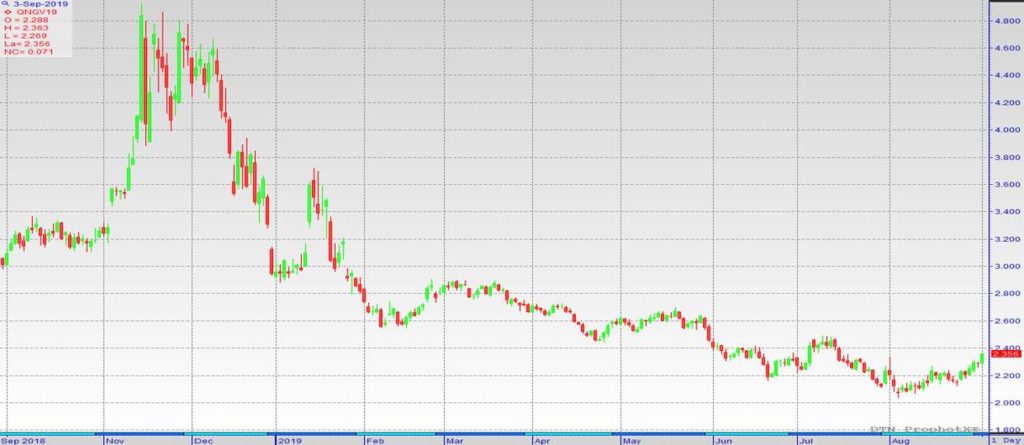– Seasonal Buying Encouraging Short-Covering Natural gas futures are edging higher on Tuesday. The price action reflects short-covering related to last week’s rollover from the September futures contract to the October futures contract. The futures contract went off the board with a record number of shorts. Traders had to decide whether to rollover their shorts into the October futures contract and attempt to continue to press the market lower, or reduce their positions ahead of seasonal buying. At 06:25 GMT, October natural gas futures are trading $2.340, up $0.05. Hurricane Dorian is having no impact on the rally. It is nowhere near the natural gas production facilities in the Gulf of Mexico near Louisiana and Texas. Furthermore, it could actually lead to lower cooling demand in Florida, Georgia and the Carolinas if it takes out electrical power. The two other tropical disturbances near Mexico and off the coast of West Africa are also not influencing the price action in the futures market although they are being watched. Short-Term Weather Outlook According to NatGasWeather for August 30 to September 6, “Comfortable conditions will continue across the Midwest, Northeast, and Mid-Atlantic with highs of upper 60s to lower 80s for light demand. The West into Texas will be hot with highs of 90s and 100s as high pressure rules for strong regional demand. Hurricane Dorian will bring rains to Florida and portions of the Southeast Sunday through Tuesday, while high pressure will expand across much of the rest of the country for a minor bump in national demand. However, the northern and eastern US will cool back to the comfortable 70s late in the week. Overall, national demand will be moderate, increasing to high Monday to Wednesday.” U.S. Energy Information Administration Weekly Storage Report The August 29 EIA report was bearish on paper, but that didn’t prevent the huge short-covering rally. The EIA reported a number that was on the high end of the estimates. The EIA reported a 60 Bcf injection but a few Bcf above the five-year average of 57 Bcf, according to the government. Total working gas in storage as of August 23 stood at 2,857 Bcf, 363 Bcf higher than last year and 100 Bcf below the five-year average.


